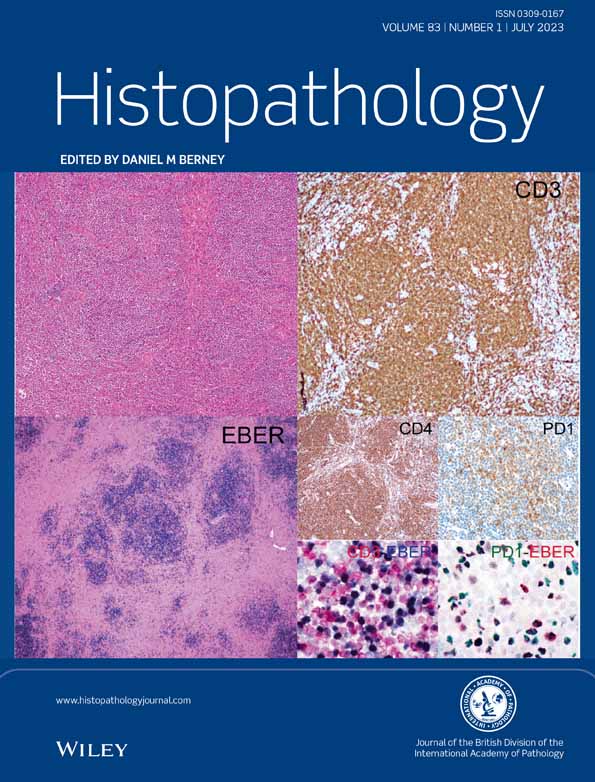DNA content abnormality frequently develops in the right/proximal colon in patients with primary sclerosing cholangitis and inflammatory bowel disease and is highly predictive of subsequent detection of dysplasia
Abstract
Aims
Patients with primary sclerosing cholangitis (PSC) and inflammatory bowel disease (IBD, termed PSC-IBD) have a higher risk of harbouring nonconventional and/or invisible dysplasias, especially in the right/proximal colon, than those with IBD alone. We postulated that DNA content abnormality may be frequently detected in the right/proximal colon in PSC-IBD patients, even in the absence of dysplasia, and that this may predispose to progression to nonconventional and/or invisible dysplasias that are often associated with increased rates of aneuploidy and advanced neoplasia.
Methods and results
DNA flow cytometry was performed on 96 morphologically benign colon biopsies taken throughout the colon from 25 PSC-IBD patients during the surveillance colonoscopy that preceded the next procedure that detected dysplasia. Thirty (31%) of the 96 benign colon biopsies in this dysplasia group demonstrated abnormal DNA content, with a propensity for the right/proximal colon (70%) (P < 0.001). In contrast, only one (1%) of 87 benign colon biopsies from 20 IBD patients without neoplasia (control group) demonstrated DNA content abnormality, and it was from the left colon. For analysis per patient, 48% (12 of 25) of the patients in the dysplasia group had abnormal DNA content compared with 5% (1 of 20) of the control group (P = 0.002). Of the 12 PSC-IBD patients with DNA content abnormality, invisible dysplasia was detected in 10 (83%) patients on follow-up, nine (75%) of whom had nonconventional dysplasia.
Conclusion
PSC-IBD patients have an increased risk of developing abnormal DNA content in the right/proximal colon, predating the detection of dysplasia.
Graphical Abstract
DNA content abnormality is frequently detected in the right/proximal colon in patients with primary sclerosing cholangitis and inflammatory bowel disease even before dysplasia is diagnosed, and is highly predictive of subsequent detection of dysplasia, in particular, nonconventional and/or invisible dysplasias.
Conflict of interest
None declared.
Open Research
Data availability statement
The data that support the findings of this study are included in this article.





